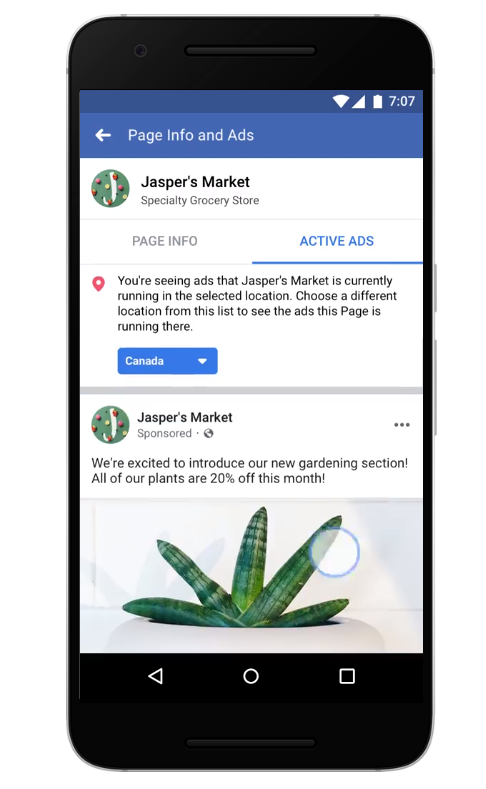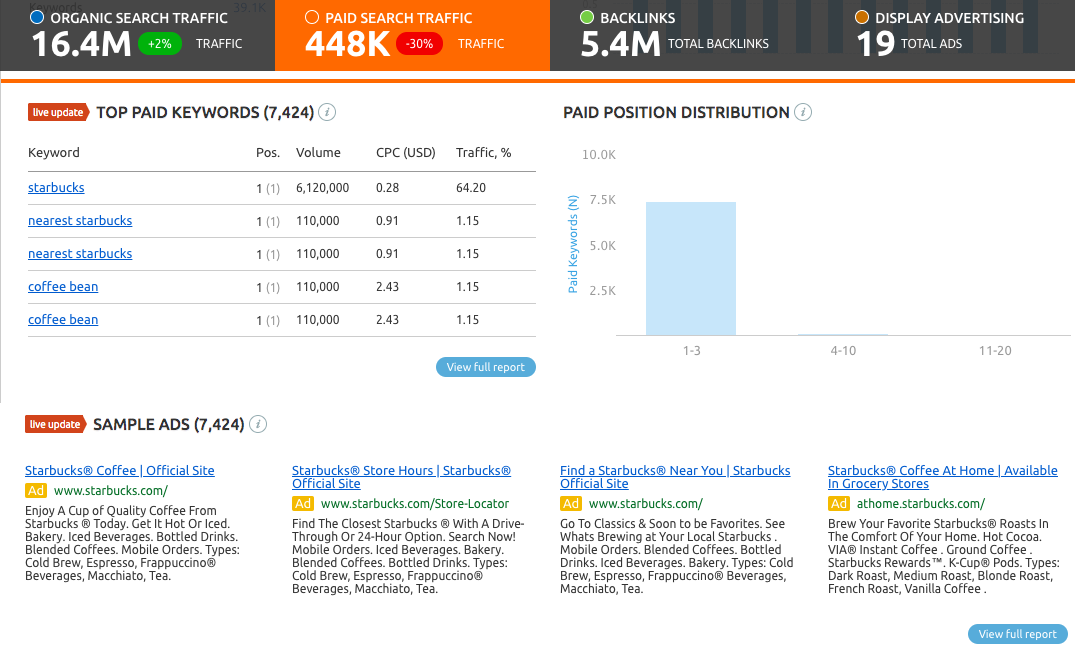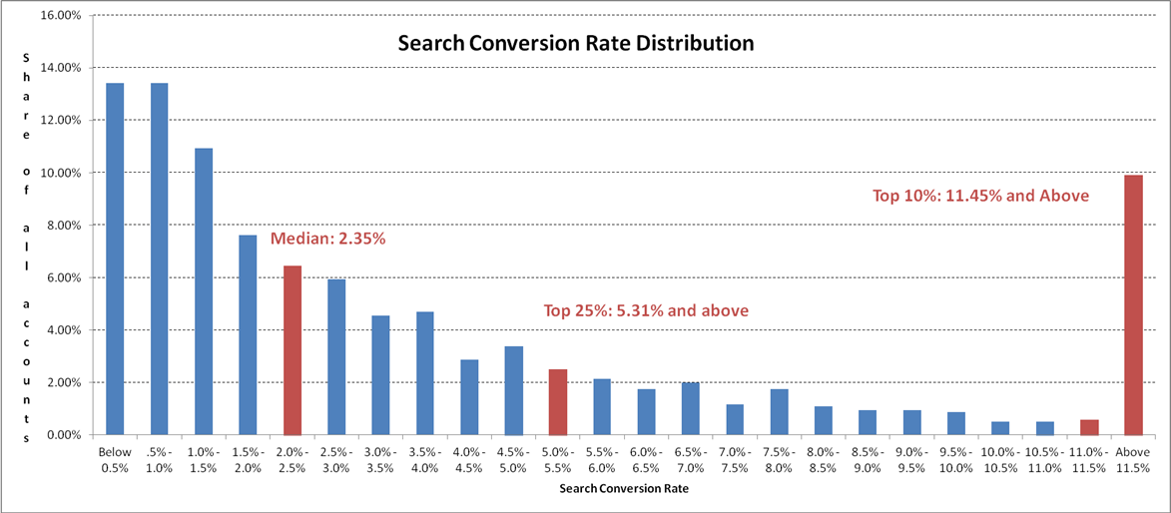In the past, we’ve written about affiliate marketing, as well as the various pitfalls and benefits that come along with it. As an affiliate marketer, you earn commissions by sending traffic to other companies’ promotions. If you send 100 visitors to the landing page of Company X, and five of those visitors buy from the company, Company X will throw a predefined commission your way for the new customers.
But what if you want more than a fixed commission for every hard-earned lead you generate? What if you’re so confident in your marketing skills that you’re willing to front-load your own equity and assume more of the risk for the chance at a bigger return?
That’s where performance marketing comes in.
What Is Paid Performance Marketing?
According to the Performance Marketing Association, “Performance Marketing is a comprehensive term that refers to online marketing and advertising programs in which advertisers and marketing companies are paid when a specific action is completed, such as a sale, lead or click.”

But since that’s still a bit vague, I’m going to dig into what performance marketing is in this article, as well as describe how it’s conducted in practice using a hypothetical example. I’ll call her Mary – an experienced marketer who’s decided that performance marketing is a good choice for increasing her margins and earning a better return on her effort.
To start, Mary sits down and choose a niche that she’s going to specialize in for her performance marketing (don’t worry – we’ll get to your niche later). Let’s say that, based on her skills and experiences, as well as the amount she can charge per lead relative to other niches, she’s decided that working with phone companies is going to be her niche.
Now, Mary knows that she can generate these leads for $200 each. But she doesn’t ask for $200; she asks for $1,000 per lead. That’s $800 in profit on each successful lead generated – and she knows she’s worth it, because she’s a damn good marketer. What’s more, companies don’t mind paying that price because the leads are worth more to them than $1,000. That’s performance marketing.
Overall, with performance marketing, there’s a greater risk than affiliate marketing, but also a greater potential reward. You may have to allocate a greater amount of money upfront than you would with affiliate marketing, but if you’re confident in your skills, the numbers make sense to do so.
Dive Deeper:
Getting Started in Performance Marketing
First things first – you need some clients. Broadly speaking, you can either source these clients entirely by yourself or you can join up with a network, such as Partnerize (or others you can find by referral or Internet search).
The advantage of using a network is that it can be easier to get started with your first clients, and it can carry a certain status or gravitas to be approaching clients with the name value of a big network behind you. The obvious downside is that the network is going to take a cut, but that’s a trade-off you’ll have to decide on.
Going back to our example, Mary has weighed the pros and cons of using a network, and decided that she’s going to go it alone. It’s not that she doesn’t see the benefit of using a reputable network, it’s just that she knows she has a few contacts at phone companies that she can use, and she’s confident about going after them independently. In this case, losing a cut of her profits just doesn’t make sense.
Next – and this is a really important piece of advice – instead of attempting to start from scratch with your marketing ideas and your marketing copy, why not make use of what’s already freely available?
Facebook can be a great place to start. According to Facebook’s earnings report, their ad revenue for the final quarter of 2018 was $16.6 billion. That’s a phenomenal amount of ad revenue, making Facebook one of your best sources for reaching new leads. Even better, Facebook’s built-in tools make it easy to see which of your advertisements are actually working.
As part of their push to improve page transparency following the various data scandals of the past year or so, Facebook has introduced the “Info and Ads” tab, which shows the ads that a page is running on Facebook:

Going back to our earlier example, let’s say you’ve landed the gig of generating leads for me and my phone service. You could either:
- Sit down at your laptop, draw up some consumer profiles, create some copy with different phrases and keywords, run some A/B testing, etc.
- OR you could jump on to Facebook, bring up the pages of my 4 or 5 biggest phone service competitors, click on their “Info and Ads” tab, and discover what copy and keywords they’re using.
Because these pages have already done their research and their testing, you can use their ads as a starting point for your campaigns, saving yourself a ton of time, effort and money.
Dive Deeper:
Using Software for Performance Marketing
Even if you’ve checked Facebook for a starting point, you probably still want a bit more information. The next thing you can do is use an online marketing tool like SEMrush, which allows you to enter your competitors’ URLs and find detailed breakdowns of their paid and organic traffic sources, their advertising keywords and more. Here’s an example of Starbucks’ top paid keywords and sample ads:

Based on what you find, you can come up with a few initial ads to test. Set a small budget for these ads – maybe $300-$500, just to test the water.
Hopefully, because of the work you’ve already put in, you should have some level of success with these ads. You’re not starting blind, so to speak, so you should only have to make some minor tweaks to these initial attempts. From there, you’ll have an excellent footing to start running a fully-fledged campaign for your client.
At this point, Mary has reached out to a couple of her contacts and has landed XYZ Phones as a client. Now she can do some straightforward, free desk research by trawling the Facebook pages and ads of XYZ’s main competitors (and maybe a few market leaders, if she’s feeling ambitious). On the basis of her desk research, Mary sees that the most effective campaigns are utilizing copy and keywords that draw on the emotional connection that phone companies provide for its customers. This gives Mary a head start on drawing up her own ads.
Measure, Measure, Measure
In terms of measuring the success of your campaign, you need to have appropriate strategies and measurement tools in place in order to highlight the impact of your marketing efforts, both for your own peace of mind and to justify your fee to your client.
With performance marketing, this will consist of two important elements: the ROI of your campaign and attribution.
Measuring ROI
Return on investment, or ROI, can be measured in a number of ways, including conversion rate, cost per lead, lead close rate, cost per acquisition and average order value. Another metric that’s important for businesses is the lifetime value of the customer, though typically, if you’re doing performance marketing on behalf of a company, you’re unlikely to have access to the kind of long-term data required to realize the full picture of the customer’s lifetime value.
So in terms of a good ROI, there isn’t a black-and-white answer, unfortunately. What’s more, you have to consider the ROI for both your client and yourself. Advice varies on what a good ROI is, though some experts believe that companies should aim for at least a ratio of 5:1 of income gained from a lead compared to the expense of generating the lead:

Going back to our hypothetical example, Mary has been paid $1,000 per lead. If the lead only makes a $1,000 purchase in their lifetime, that’s a pretty poor ROI. But if they make an upfront purchase of $3,000 and then renew for a second year, that $6,000 in lifetime value produces an excellent ratio of return.
You won’t necessarily know how each lead you deliver goes on to perform, but there are metrics you can control on your end.
To get an idea of a benchmark for conversion rates, research from Larry Kim found that the average conversion rate of Ads accounts in the top tenth percentile was 11.45%, while the average conversion rate across all Ads accounts was 2.45% (this isn’t a hard and fast target to measure the performance of your campaigns against, but it’s nice to have some context):

Whether or not you choose to focus on conversion rate as your preferred ROI metric, what’s most important is that you choose a performance KPI for your own campaign investments, and then arrange to both test and track your results.
If, as an example, you’re generating leads at a cost of $200 and selling them for $1,000 each, that’s a nice ROI ratio of 5:1. But let’s say that, after some A/B testing or trial campaigning, you find that you’re spending twice as much on advertisements as you’d thought you would. If all you’re doing is guessing what your costs are, you won’t be able to determine whether or not you’re achieving the ROI that’s necessary to create a sustainable, profitable business.
A Note on Niche Marketing
One of the questions you’ll have to answer as a performance marketer is whether you’ll focus on a specific niche or work broadly across multiple industries.
The key consideration here is your time. When you focus on a single niche, you’re able to execute profitable campaigns faster, as a result of your track record and experience. If you go outside of your niche, the time required to run a successful campaign can start to eat into your profits.
Now, this might not be too much of a problem, provided that you’re happy to operate at a lower profit margin. However, if you wind up spending too much time on projects that carry a much lower profit margin – especially if it comes at the expense of campaigns or clients that you’re better suited for – it can become an issue.
In economics, there’s a concept of “opportunity cost”. Basically, opportunity cost dictates that you can’t measure the value of your decision against only a baseline of zero. Instead, you also have to factor in the cost of losing out on other alternatives, based on the one you’ve chosen.
So, in practical terms, you can’t simply say “Well, I’m making $200 per lead, which is more than if I wasn’t doing anything.” You also have to factor in the cost of not doing the project that would earn you $800 per lead because you were busy with the first one.
Once you’ve accepted that reality – that certain areas or specialties are more valuable to you, and that you shouldn’t simply settle for any area just because it pays – it becomes much easier to settle on a niche.
When settling on a niche, Mary may have a similar level of expertise in multiple fields. However, if the phone company niche is much less populated in terms of the presence of performance marketers, and if it provides a better return for Mary’s effort as a result, that makes focusing there a smarter choice.
Because of this, choosing a single niche to focus on is pretty much my #1 golden rule of performance marketing. One agency I know is bringing in close to $90 million a year, and the reason they can do that is because they stick exclusively to one niche. Simply put, you have to be willing to sacrifice the breadth of opportunities in order to maximize your returns on a narrower offering.
Dive Deeper:
Tracking Attribution
So, let’s say Mary has run a very successful performance marketing campaign and generated 10 leads for XYZ Phones. She sends them the invoice for $10,000, and they come back and say “No, sorry, you only generated two leads for me, so I’ll only pay you $2,000.”
Sounds unpleasant (to say the least), but marketers face this situation every day. How do you avoid it? Attribution. In our hypothetical situation, it’s too late for you to go back and implement an attribution strategy after the fact. Instead, make sure that your attribution system is in place before you do a single thing on your campaign.
If you operate through an agency, they’ll take care of the verification and attribution process for you. But if you’re acting independently, you’ve got to put your own system in place.
Without getting too far into the specifics of attribution (which could fill an entire post on its own), there are two things you need to account for:
- An audit of all of the digital touchpoints along the customer journey
- Appropriate tracking tags for each stage of this journey, using a tool like LeadDyno or Ambassador.
With these components in place, even if your client disagrees with you about the number or the nature of the leads you’ve generated, you’ll have a digital paper trail to justify your request (and it’ll help you refine your campaigns going forward). Take the steps to get this system set up as soon as you begin performance marketing. It’s too critical to ignore.
Dive Deeper:
Launching Your First Performance Marketing Campaign
Performance marketing can be a great opportunity for you to realize the rewards that your marketing talent deserves. And although it carries with it greater risk than affiliate marketing or other strategies, it also comes with far greater potential rewards.
Like Mary, be smart about how you launch your campaigns. Find your niche. Get your attribution strategies in place. Test smaller campaigns and then improve upon them based on your ROI measurements. Stick to the plan and with continued investment, you’re sure to see results!
